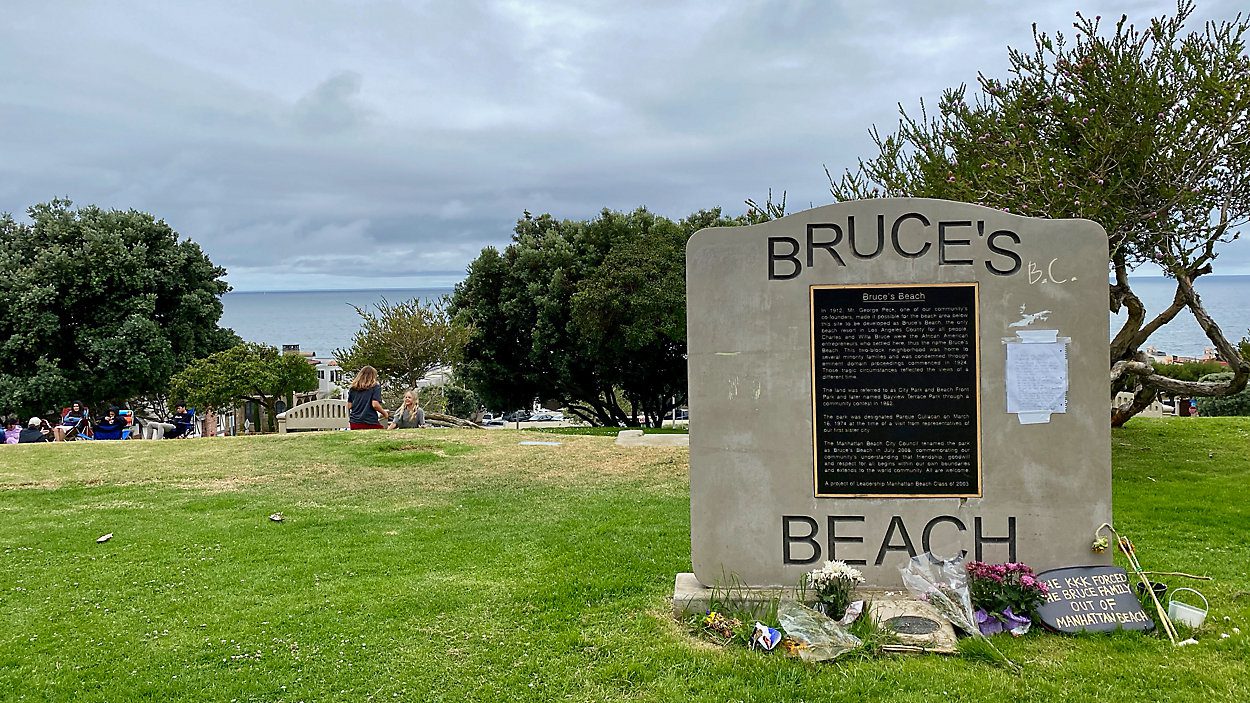 View Winners →
View Winners → 
In a move hailed as an effort to right a nearly century-old wrong, the Los Angeles County Board of Supervisors voted unanimously Tuesday to return ownership of a pristine piece of Manhattan Beach seaside property to the descendants of a Black family who had the land stripped away nearly a century ago.
“We can’t change the past and we will never be able to make up for the injustice that was done to Willa and Charles Bruce a century ago, but this is a start,” said Supervisor Janice Hahn, who spearheaded the effort to return Bruce’s Beach to the family.
She said the move will allow the Bruces’ descendants a chance “to start rebuilding the generational wealth that was denied to them.”
Under the board’s action, ownership of the beachfront property shifts from the county to the great-grandsons of Charles and Willa Bruce, who purchased the land in 1912 and operated a resort for Black residents until the city of Manhattan Beach condemned the property under a false pretense of developing a park.
Immediately following the vote, the five-member board took a short recess in its meeting to officially sign the transfer documents for the land near Highland Avenue and 26th Street.
“We aren’t giving property to anyone today,” board chair Supervisor Holly Mitchell said. “We are returning property that was erroneously, and based on fear and hate, taken from them.”
Under the agreement approved by the board Tuesday, the land was transferred to Marcus and Derrick Bruce, the great-grandsons of Charles and Willa Bruce. The Bruces will lease the land back to the county for $413,000 a year for the continued operation of county lifeguard facilities at the site.
The agreement also includes clauses that would allow the Bruces to later sell the property to the county for a price not to exceed $20 million.
Returning the property required a change in state law to authorize the county to transfer ownership of the land. It also required various actions at the county level to identify Bruce family heirs and settle the various financial implications of transferring the property.
Hahn’s voice quaked with emotions at times as she discussed the roughly yearlong effort to return the land, an effort she said will be “one of the most important things … I’ve been involved in.”
Hahn previously represented the Manhattan Beach area, but under the recent county redistricting effort, the city now falls in Mitchell’s district.
Mitchell said the Bruces “had the courage, the entrepreneurial spirit and vision to purchase beachfront property nearly 100 years ago,” adding that they “welcomed Black patrons during a time when legal segregation in the great county of Los Angeles kept Black families from accessing what California is known for — our public beaches.”
While celebrating the approval of the land transfer, Mitchell said there is still much more work to do to “call out and acknowledge systemic racism.”
Willa and Charles Bruce purchased their land in 1912 for $1,225. They eventually added some other parcels and created a beach resort catering to Black residents, who had few options at the time for enjoying the California coast.
Complete with a bath house, dance hall and cafe, the resort attracted other Black families who purchased adjacent land and created what they hoped would be an oceanfront retreat.
But the resort quickly became a target of the area’s white populace, leading to acts of vandalism, attacks on vehicles of Black visitors and even a 1920 attack by the Ku Klux Klan.
The Bruces were undeterred and continued operating their small enclave, but under increasing pressure, the city moved to condemn their property and surrounding parcels in 1924, seizing it through eminent domain under the pretense of planning to build a city park.
The resort was forced out of business, and the Bruces and other Black families ultimately lost their land in 1929.
The families sued, claiming they were the victims of a racially motivated removal campaign. The Bruces were eventually awarded some damages, as were other displaced families. But the Bruces were unable to reopen their resort anywhere else in town.
Despite the city claiming the land was needed for a park, the property sat vacant for decades. It was not until 1960 that a park was built on a portion of the seized land, with city officials fearing the evicted families could take new legal action if the property wasn’t used for the purpose for which it was seized.
The exact parcel of land the Bruces owned was transferred to the state, and then to the county in 1995.
The city park that now sits on a portion of the land seized by the city has borne a variety of names over the years. But it was not until 2006 that the city agreed to rename the park “Bruce’s Beach” in honor of the evicted family, a move derided by critics as a hollow gesture.








































































































